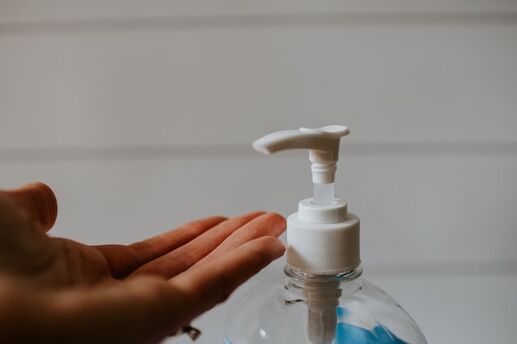Your Home Is Clean … But Is It Healthy?
You've worked tirelessly to make your home a haven for the whole family. But did you know that even the tidiest of homes can play host to troublesome germs and allergens, which can lead to endless sniffles or the common cold?
“That's because your hands are actually the dirtiest surface in your house, and you're responsible for spreading those germs every time you touch the handles, faucets, railings, light switches and microwave buttons," says cleaning expert Don Aslett, author of more than 40 home care books, including the best-selling Clutter's Last Stand.
But not to worry: You can get rid of germs by staying on top of them. Here's your master cleaning schedule for keeping germs at bay to ensure your family's health. Print it out and post it on your fridge to use as a reminder.
1. Kitchen and bathroom sinks and countertops
How often: daily
You touch the faucets in the kitchen each time you cook (and handle raw meat). And in the bathroom, you touch the faucets and countertops just about every time you go into the room. Sinks and drains in these two rooms are home to loads of bacteria, including E. coli.
Spray the faucets, sinks and counters with an antibacterial spray. Let it sit (10 minutes is ideal to kill germs and bacteria), then wipe with a washable microfiber cloth, which is more sanitary than a sponge and traps more than a regular rag would, says Aslett.
2. Clothes, bed linens, kitchen and bathroom towels, and bath mats
How often: every three days
Instead of letting laundry pile up, it's healthier to do it every few days. This helps avoid mold growth in the hamper where moisture can get trapped from soiled clothes and linens. It also helps to get rid of dead skin cells that can become part of house dust and attract dust mites.
3. Kitchen and bathroom floors, and the toilet seat
How often: twice a week
Believe it or not, there are more germs on the bathroom floor than on the toilet seat. That's because flushing enables microscopic germs to end up on the bathroom floor (and floors are cleaned much less often than toilets). It's good to get into the habit of closing the lid before you flush. Additionally, when you clean, be sure to use a disinfectant to wipe down the seat and lid.
In both the kitchen and the bathroom, mop floors with a bleach-based cleanser. In the kitchen, be sure to clean up food particles and grease, because they can attract unwanted and unhealthy pests.
4. Carpets, cabinets, sofas and mattresses
How often: weekly
Dust mites can cause allergic reactions in some people, so it's important to prevent exposure as much as possible. Dust mites feed on dead skin cells (yours and your pet's), which makes mattresses and pillows some of their favorite hiding places. Protect yourself by wrapping your mattress with a dust-mite-proof cover and vacuum, or wash pillows weekly. If you can live without a feather pillow, switch to one with synthetic material, which is less likely to attract dust mites.
Common household dust doesn't have germs in it since it lacks the moisture that germs require, but it does harbor allergens. Vacuum carpets, soft furnishings and bookshelves weekly (two to three times a week if you have pets) using a machine equipped with a high-efficiency particulate air (HEPA) filter. Follow with an antibacterial spray to wipe down all hard surfaces.
5. Tubs, shower stalls and trash cans
How often: weekly
Bathing removes germs and viruses from your body, yes, but not all of them die down the drain. In fact, bacteria thrives in moist environments. Use a disinfecting cleanser once a week to wash the sides and floor of the tub and shower stall and the inside of trash cans. Dry the surfaces with a towel, or leave the door or curtain to the shower open to air-dry.
6. Refrigerator and other appliances
How often: weekly
Clean out the fridge before you go grocery shopping and toss spoiled food and leftovers that have been there for more than a couple of days. Then give all major appliances, including the handles and buttons, a healthy scrub with soap and water or disinfectant spray.
Photo by Kelly Sikkema on Unsplash
Like this article? Get more by following us on Facebook at Beauty & Confidence.






